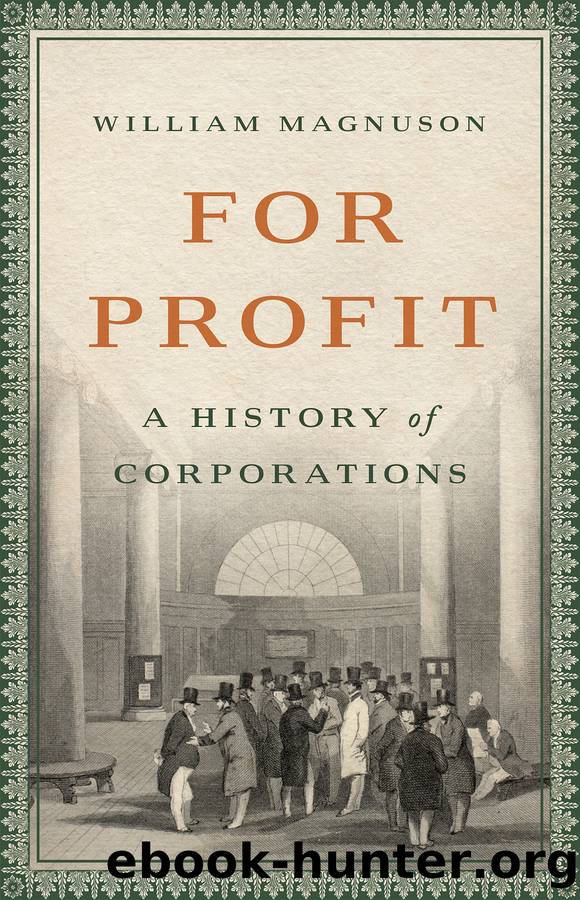For Profit by William Magnuson

Author:William Magnuson [MAGNUSON, WILLIAM]
Language: eng
Format: epub
Publisher: Basic Books
Published: 2022-11-04T00:00:00+00:00
PERHAPS THE FARTHEST-REACHING CONSEQUENCE OF FORD MOTOR Company and the ideology of Fordism was felt outside the company, in the rise of a culture devoted to consumption. Ford had always placed an emphasis on the wants and needs of the buyer. It was his insight into the mass audience for cars that led him to his Model T design. It was his insight into how much a consumer could afford to pay that led him to strive to push down the price of his car beneath $500, a feat he finally achieved in 1914. But the revolutionary system of mass production that Ford pioneered in the 1910s required an accompanying revolution in consumer culture. Mass production required mass consumption. Ford needed large numbers of buyers to snap up the hundreds of thousands of cars that were now pouring out of his factories every year. And so, somewhere along the line, Ford decided he needed to do more than just cater to existing needs. He needed to create new ones.
When Ford introduced the five-day workweek in 1926, he explained that the necessity of giving workers free time to cultivate their appetites had driven him to do so. He understood the powerful influence that leisure exercised on desire. âThe country is ready for the 5-day week,â he said. âWithout it the country will not be able to absorb its production and stay prosperous.â To Ford, there was an inexorable connection between free time and shopping. âBusiness is the exchange of goods. Goods are bought only as they meet needs. Needs are filled only as they are felt. They make themselves felt largely in leisure hours. The man who worked 15 and 16 hours a day desired only a corner to lie in and a hunk of food.â But Ford went further than just understanding the link between consumption and lifestyle. He believed that consumption had value in itself, writing that ânothing could be more splendid than a world in which everybody has all that he wants.â37
In order to generate demand for his cars, Ford developed nationwide advertising campaigns that played off Americansâ desires and beliefs, illustrated with eye-catching graphics. One 1924 advertisement showed a woman gathering fiery-red autumn leaves in a pasture and boasted of âfreedom for the woman who owns a Ford.â âTo own a Ford is to be free to venture into new and untried places,â the ad read. Another ad showed a man helping a young woman from a car and remarked âa very pretty girl and a charming scene from California.â âHe tours in it, travels in it, hunts in it, climbs mountains and crosses deserts, and the more he demands of it, the more its performance surprises him,â read another ad. When Ford realized that many potential buyers simply were not earning enough to afford his cars, the company launched a buy-on-credit scheme, the Ford Weekly Purchase Plan. âBuying begets buying, if the things are there to buy,â Ford said. âThere is no consumerâs dollar. Thinking of
Download
This site does not store any files on its server. We only index and link to content provided by other sites. Please contact the content providers to delete copyright contents if any and email us, we'll remove relevant links or contents immediately.
The Social Psychology of Inequality by Unknown(2312)
The Plant Paradox by Dr. Steven R. Gundry M.D(2040)
The Writing on the Wall by Anselm Jappe(1759)
Working for Yourself by J.D. (Nolo) Stephen Fishman(1478)
Every Landlord's Legal Guide by Janet Portman & Stewart Marcia & Ralph Warner(1325)
The First 20 Hours: How to Learn Anything ... Fast by Kaufman Josh(1304)
ADHD on Trial by Michael Gordon(1241)
Decisive by Chip Heath(1201)
Drafting Contracts: How and Why Lawyers Do What They Do, Second Edition by Stark Tina L(1172)
Working for Yourself by Stephen Fishman J.D. (Nolo)(1139)
The Economist Aug 8th 2015 by The Economist(1123)
Restitution by Restitution(1115)
The Economist Aug 29th 2015 by The Economist(1098)
A Practical Guide to International Arbitration in London by Hilary Heilbron(1084)
The Lord of the Rings: The Fellowship of the Ring, the Two Towers, the Return of the King by J. R. R. Tolkien(1083)
Intellectual Property Strategy by John Palfrey(1082)
Collusion by Luke Harding(1045)
Persuasion by Owner(1012)
Chapter 1 by Owner(950)
